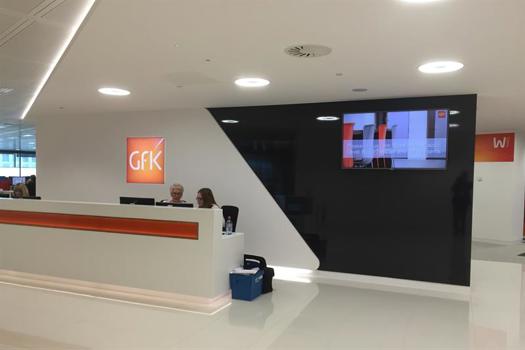The organisation
Paris-headquartered global automotive supplier Faurecia is the ninth-largest automotive parts manufacturer globally, and the world number one for providing vehicle interiors and emission-control technology. It employs more than 122,000 people across 35 countries, creating revenues of €17.5 billion (£15.6 billion) in 2018. It counts Volkswagen, PSA Group (owner of Peugeot, Citroën, Opel, and Vauxhall brands), Ford, General Motors, BMW, Daimler, Fiat/Chrysler and Jaguar Land Rover among customers. As such, Faurecia equips approximately one in three new cars made today.
The challenge
In the face of huge disruption in the automotive sector carmakers increasingly demand that their suppliers innovate. Faurecia needed to guarantee that the skills of its 60,000 French-based employees were leading edge in two very different areas – emissions and emerging technology. (The firm is seeking to become the leader in creating immersive and tech-laden ‘cockpits of the future’.)
As part of this Faurecia started a company-wide digital transformation three years ago. In parallel it has overhauled its learning and development strategy. It has created an internal staff ‘university’ using platform Coorpacademy to give employees access to on-demand learning – everything from video-based micromodules to gamification learning tools and virtual reality (VR). The project is under the leadership of David Jestaz, vice president of Faurecia University.
The strategy
“In the past our sector was predictable. Not anymore,” says Jestaz. “We took a decision that as leaders we needed to understand current competencies, capabilities and skillsets and move them forward – not necessarily to create a training centre but to create a library of knowledge staff can tap into.”
The strategy has been two-pronged. First it brought on board its cohort of 10,000 managers, to both develop them and ensure they understand how to cascade learning down the line. This was then followed by extending learning to Faurecia’s 45,000 shop-floor staff (this has now expanded to the rest of its global locations).
“High-level management content has included everything from how to manage a plant in transformative times to securing better performance and managing suppliers,” says Jestaz, who has been given a budget to buy in external courses as well as modify Faurecia’s own content and host it on the platform. Two-thirds of learning is now from externally-sourced content, direct from subject matter experts.
Keen that buy-in comes from the very top CEO Patrick Koller has been involved in creating content – developing his own sales and transformation course on megatrends and how to respond to them.
To make learning more inquisitive and fun for staff a policy of providing content that sparks curiosity and self-directed learning has been adopted.
“Only around half of content is operational, and what I would call ‘need to know’,” Jestaz says. “The rest is material that opens staff up to new areas they may not have even realised they were interested in.”
He adds: “The more people search around the better, because a tool on the platform will then suggest other courses or areas that might be of interest to staff, based on what they’ve already consumed.”
Given that the ‘life expectancy’ of content is only considered to be two years at most, all barriers to it have been removed. This includes allowing shop-floor teams to access training on their smartphones during breaks. Breakout rooms have also been equipped with screens for staff to view learning material on.
Each Friday afternoon emails are sent to workers telling them about the latest in-house or external MOOCs (massive open online courses) that they can request to join. As many of the courses as possible carry video components to make them easily digestible.
VR learning has also been created – from management-level courses that demonstrate (through 3D renderings) how they should move around a plant, to courses on developing visuals of car interiors so designers can see how a car cockpit looks from all angles. Even staff who don’t work in that area are encouraged to experience this so they understand what their colleagues do.
The result
From the outset Faurecia has aimed not just to develop pure technical expertise, but also to “inspire a vision” among staff about where the company is going (and how they can grow with it).
On both counts Jestaz claims early results indicate success. “People are learning in areas that are completely new to them – some of which have taken us by surprise,” he says.
“We published a course on blockchain and had 3,000 people follow it. We could never have known there was demand for this type of content.”
Although the most popular courses still have a compliance focus (internal control or health and safety for example), other top courses include those around teamwork, ethics, performance management and understanding business transformation. Competitive learning is encouraged with games and league tables, and so far more than 32,500 so-called ‘learning battles’ have occurred between ‘Faurecians’.
MOOCs have proved incredibly popular. Faurecia now has the ability to create a new MOOC and distribute it within eight weeks. Currently 35 are completed every minute.
An interesting observation is that 5% to 10% of all learning is done by people using their own devices during weekends, demonstrating new-found engagement with L&D. The average individual’s consumption has increased from an hour a month when the rollout first began to two hours a month today. This is backed up by the number of training questions now being answered by HR. To begin with around 40,000 a month were being dealt with, today it’s 350,000 globally.
With coming up to a year of data under his belt, Jestaz says the next phase of the programme is to bring in more detailed analytics about which locations are learning what, and why. India, for example, currently demonstrates faster learning rates.
The team will also be delving into how learning outcomes can be measured against performance by tabulating these to moves and promotions within the business.
“We’re removing buzzwords from L&D and replacing them with real learning,” says Jestaz.









